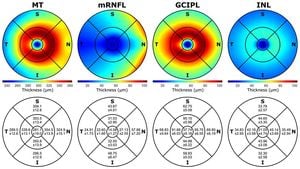The genus Impatiens, known for its ornamental and medicinal value, has long posed taxonomical challenges for researchers. A recent study has made significant strides toward shedding light on these challenges by analyzing the complete chloroplast genomes of 13 species within this diverse genus.
Impatiens spp. are primarily found across highland and mountainous terrains, particularly within the karst landscapes of southwestern China. This area, recognized as one of the hotspots for Impatiens diversity, is home to numerous endemic species. Yet, the classification and evolutionary relationships among these species have been clouded by morphological diversity and inadequate molecular data.
To tackle this issue, the researchers undertook comprehensive chloroplast genome sequencing, resulting in findings key to defining the genomic characteristics of Impatiens. This research presented chloroplast genomes ranging from approximately 151,284 to 152,421 base pairs, housing 113 genes, including 80 protein-coding genes, 29 transfer RNAs, and 4 ribosomal RNAs.
The study revealed identifiable mutation hotspots, particularly noting the gene ycf1 as exhibiting the highest variability, signaling its potential utility as a DNA barcode marker for future identification and taxonomy of Impatiens species.
Dr. Q.Q.Y. and colleagues emphasized the importance of these findings, stating, "This study comprehensively analyzed the cp genomes of different taxa, shedding light on the taxonomic intricacies of Impatiens species, providing valuable information for its phylogenetic and taxonomy." This breakthrough is particularly timely as scholars increasingly recognize the need for molecular data to resolve species-level classifications persisting over centuries.
Analysis also depicted clear patterns of codon usage among the species, with the study identifying 31 high-frequency codons predominantly finishing with A/U, highlighting similarities across the genomes.
Another notable aspect of this work was the identification of significant differences related to scattered repeat sequences within the genomes. The varying quantities and types of these sequences are expected to aid in distinguishing between different genome groups, providing new mechanisms for classifying Impatiens.
Overall, the results from this research illuminate the convoluted taxonomy of Impatiens, which have historically been muddled by varying morphological traits. The integration of complete chloroplast genome analysis stands as a potential gamechanger, offering clarity where macroscopic examination often results in controversy.
Looking forward, this study invites future research to continue exploring the genetic diversity and evolutionary trends of Impatiens. Linkages between chloroplast genome markers and environmental adaptations will considerably enrich our comprehension of this fascinating genus.
With the advancements witnessed within this field of study, species within the genus Impatiens are now positioned more favorably for classification efforts, enhancing avenues for conservation and study of these remarkable floral varieties.



